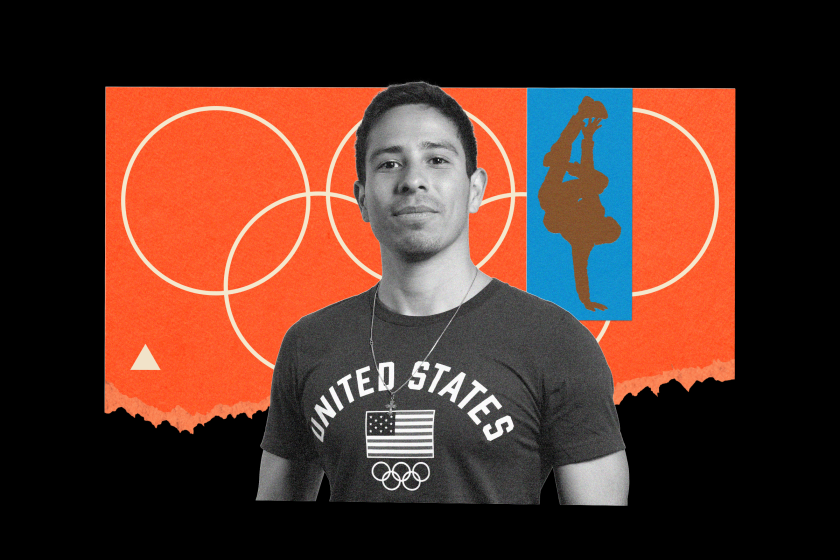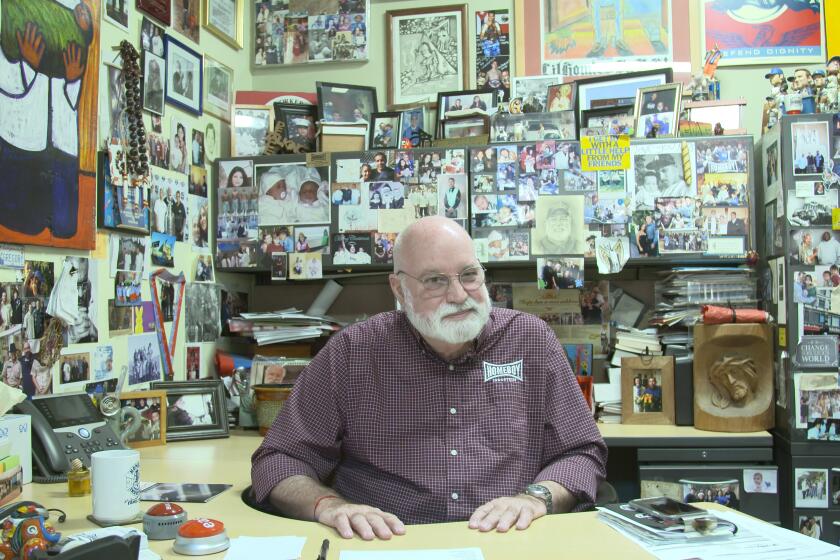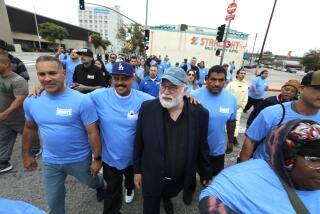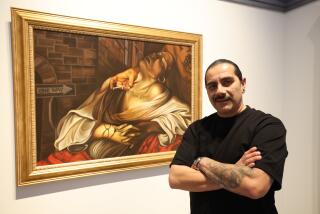Artist and mentor, a former gang member, honored by National Endowment for the Arts

- Share via
Fabian Debora believes art can be a lonely practice but can save you from a life of disrepair and gang violence.
Debora, a muralist and co-founder of the Homeboy Art Academy in East Los Angeles, points to himself as an example of that belief.
A former gang member who spent several years incarcerated, Debora was recently honored by the National Endowment for the Arts as a 2024 NEA National Heritage Fellow. He was presented the award Wednesday during a ceremony at the Library of Congress in Washington, D.C., along with other recipients recognized for their contribution to folk and traditional arts.
Debora, 48, was recognized for his work as a teacher and mentor to others seeking to find purpose through art. At the Homeboy Art Academy, which is connected to Homeboy Industries, Debora and other mentors provide guidance to the youth who are either actively involved in the gang life, recently released from incarceration or are seeking a refuge from the gang life.
Art, Debora believes, can also take you to beautiful places.
Victor Montalvo, along with other members of Team USA, will dance in every which way in hopes for a medal at the Olympics’ first breaking competition.
His art subjects include the people he sees in the working-class neighborhoods where he grew up and still calls home.
In March, Debora’s Renaissance-inspired series titled “Cara de Vago” showcased his paintings modeled after Italian master Caravaggio. In Debora’s work, he painted a young girl from Lincoln Heights standing in as the Madonna. Angels descended on young cholos under the orange glow of a Los Angeles streetlight. In another painting, a masked Indigenous warrior presented himself to an incredulous saint who poked a finger into his side, much like the biblical scene of the apostle Thomas with Christ after his resurrection.
Debora said he owes much of his inspiration to the Chicano mural movement that grew throughout Los Angeles in the 1960s and 1970s.
“I think what the Chicano mural movement has taught me is that we paint the truth,” Debora said after receiving his award. “We paint what’s real. We paint what’s present, you know? And we also paint not only the struggles, but the social justices and the resiliency that we discover as human beings or homeboys, or, let’s just say, people of color, or whatever you want to call it.”
Debora’s assent from gang member to nationally recognized artist relies on the kindness of Homeboy Industries founder Father Greg Boyle.
Father Greg Boyle, founder of Homeboy Industries, one of the largest gang intervention programs in L.A. County, has received the Presidential Medal of Freedom from President Biden.
At the age of 12, Debora joined a gang and was in and out of juvenile hall for fighting, stealing and making life difficult for himself and his family. In 1994, he faced a three-year sentence in a juvenile work camp until Boyle intervened. He convinced a Los Angeles Superior Court judge to place Debora in a program with the East Los Streetscapers, an artist collective that started after the Chicano Moratorium in the 1970s and morphed into the Palmetto Gallery, an art space that was founded in 1990.
“I’ve known Fabian for over thirty years and throughout this time, art was his refuge and at the center of his life,” Boyle said in a statement recognizing the NEA National Heritage Fellow award. He called it “an acknowledgment of his creative talents, and will have lasting, positive impact on his family, everyone at the Homeboy Art Academy and our entire Homeboy community.”
During his acceptance speech, Debora thanked Boyle, Homeboy Industries and his students at the academy, who he calls his “art gang.”
“You guys give me life every day, and for that I am grateful,” he said.
In October, Debora plans to install a three-story mural on a Boyle Heights apartment complex called “The Silver Lining of Boyle Heights.”
“When you think about my life, and you think about all I’ve gone through,” Debora said. “You see all the layers of Boyle Heights that sometimes folks don’t get to see and you experience it.”
He considers the mural an opportunity to give back to the community, which is just another way of him trying to create a beautiful place.
More to Read
Sign up for Essential California
The most important California stories and recommendations in your inbox every morning.
You may occasionally receive promotional content from the Los Angeles Times.













